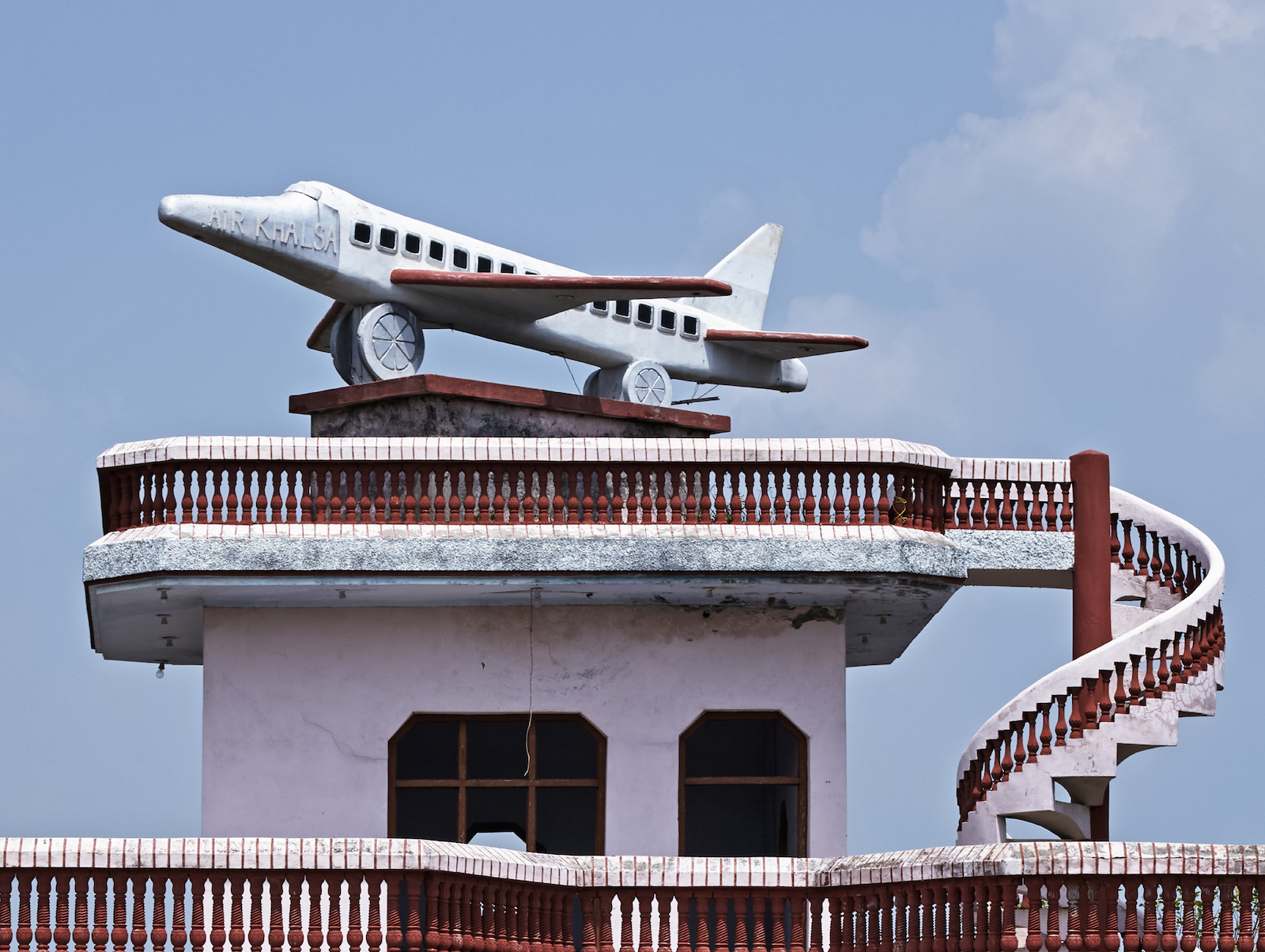After independently encountering the rooftop sculptures in Punjab villages, in 2019 artist Rajesh Vora and curator Keith Wallace met and travelled together to research this distinct cultural expression. What the following discussion brings to light is little known outside of India but deeply rooted in the story of international Indian migration.
Keith Wallace: When and how did you first encounter the water tanks and other rooftop sculptural embellishments in Punjabi villages that your Everyday Monuments project comprises? And what did you think of them? I remember when I first encountered them on a trip through Punjab in 2006, I was baffled; I had never seen anything like them anywhere else and did not understand the story behind them. It was only years later that my inquisitiveness was reignited through conversations with others, such as Delhi-based critic and curator Gayatri Sinha, who introduced me to your work and led to me making contact with you.
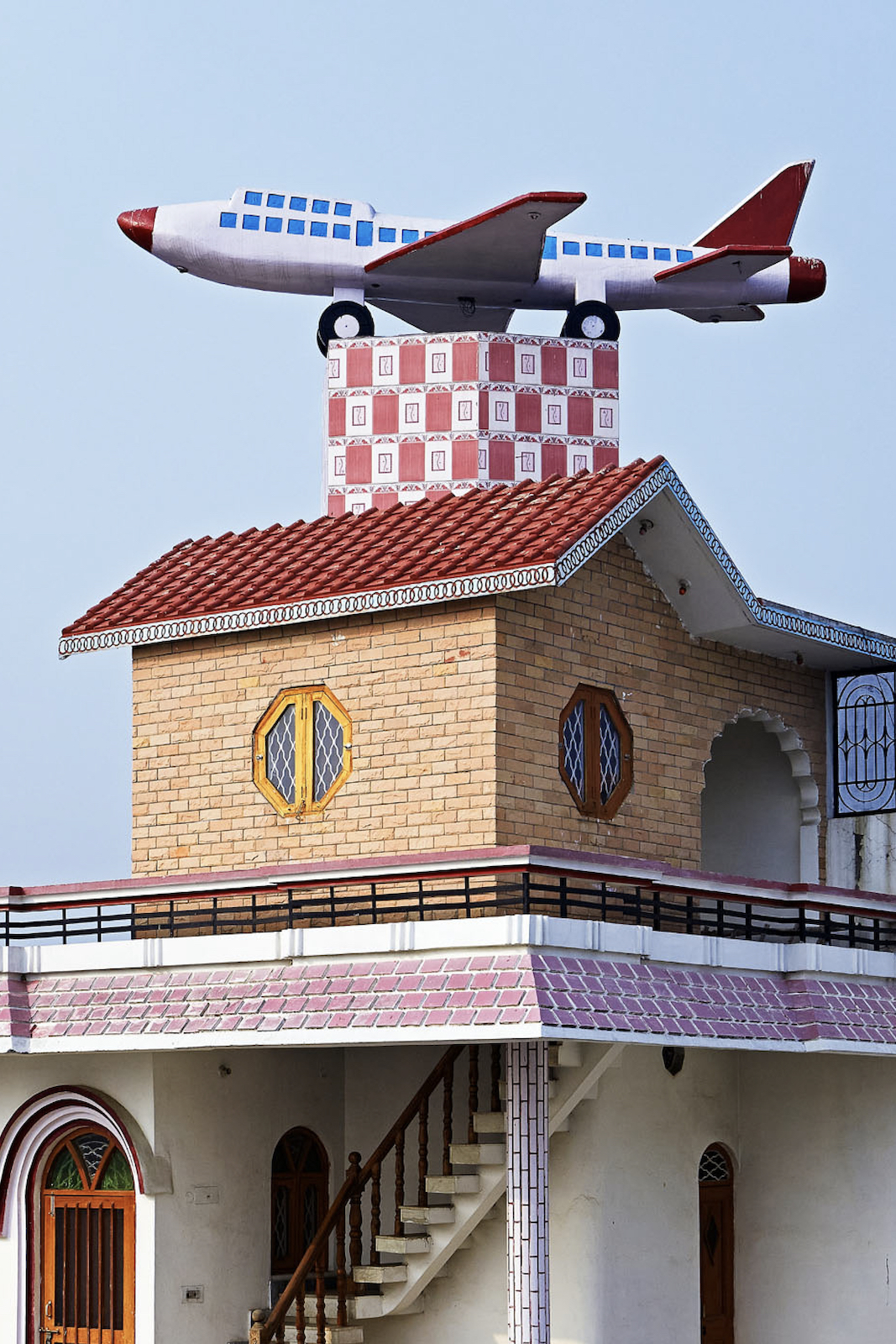
Rajesh Vora: It was in 2014, on an assignment for the Italian-based Colors magazine issue called “Moving House,” about global migration. I visited a gurdwara (Sikh temple) in the town of Talhan, in the Doaba region of Punjab—it is popularly known as the Airplane Gurdwara. It was hard to believe that devotees who wished to migrate would offer a toy airplane bought at one of the many stalls located directly around the gurdwara in the hope of being granted a visa to enter another country. As I witnessed and documented this emotional ritual, I heard rumours of successful immigrants returning to their village and placing an airplane sculpture on their newly built home, which was equally fascinating to me. Not surprisingly, it drew me into a search for these sculptures in the Doaba region—popularly recognized as Punjab’s NRI (Non-Resident Indian) hub—where Talhan is located, and from where many migrated to the U.K., Canada, United States, Australia, and other parts of the world.
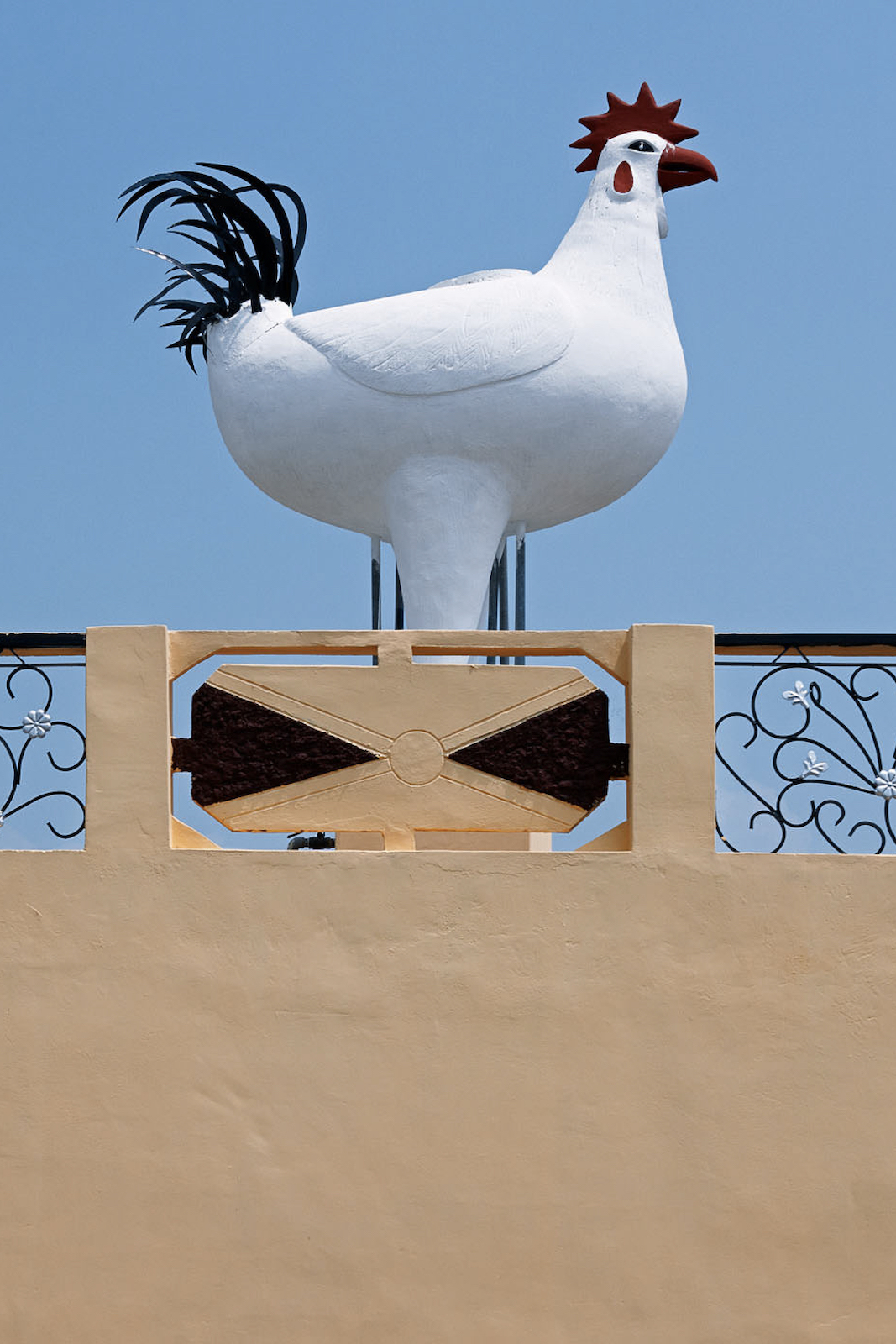
I had imagined a large-scale airplane model on top of the houses, but when I saw a water tank in the shape of an airplane, I couldn’t help but marvel at its ingenuity, giving a twist to architect Louis Sullivan’s famous axiom “Form follows function.” Besides its functionality, I noticed that the water tank was aesthetically placed in relation to the vernacular architectural style of the building. The initial builders of these houses, known as mistris (local construction artisans), were unschooled in formal architectural design, and their work reflects the rich diversity of India’s climate, locally available building materials, and the intricate variations in local social customs and craftsmanship.

But as I travelled away from the main roads and farther into the villages, I saw water tanks that weren’t airplanes but were instead in the shape of army tanks, falcons and animals, footballs, vehicles, and even figurative sculptures of weightlifters and football players, some of which I learned did not necessarily function as water tanks but were placed on top of the water tank.
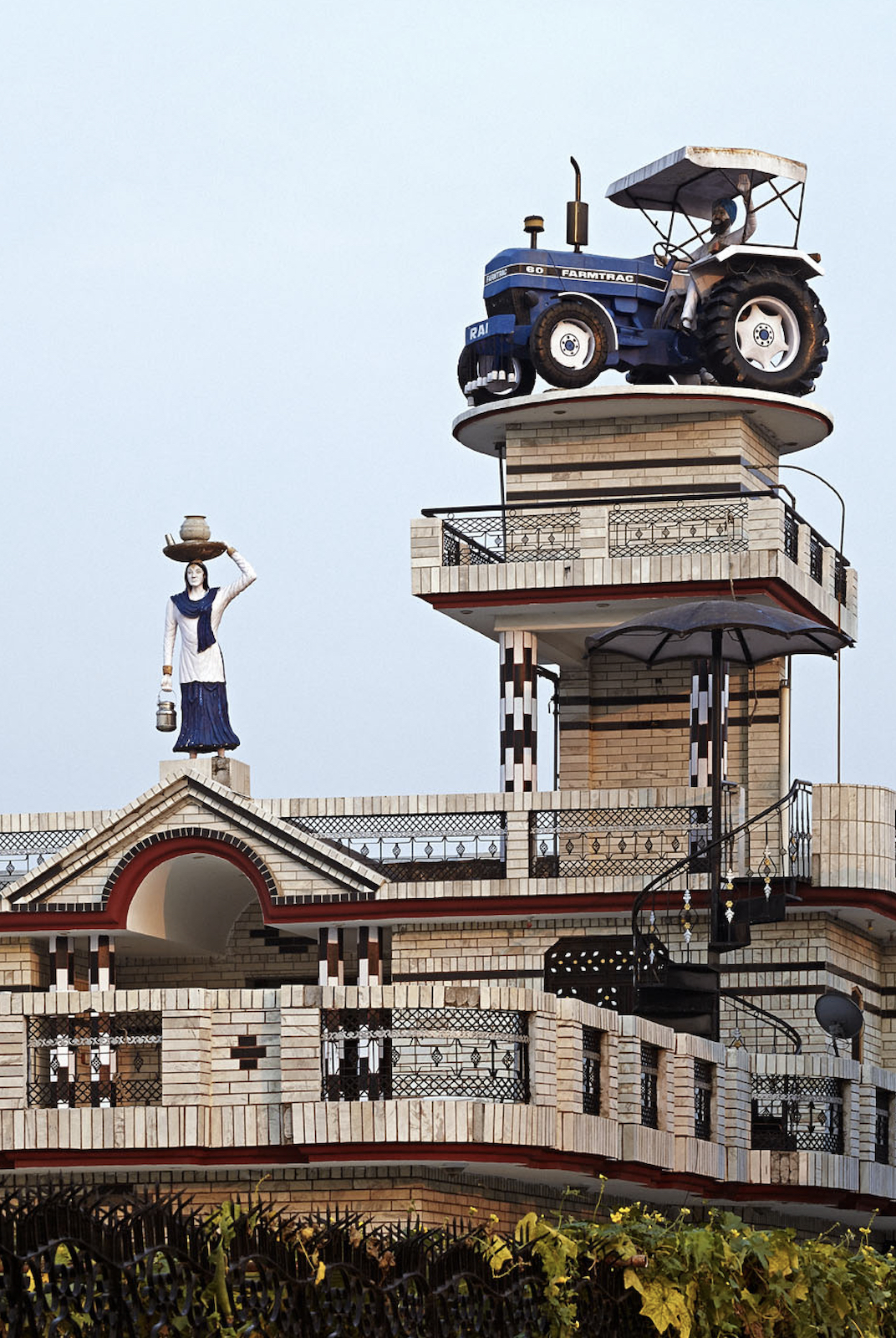
Before I understood their purpose, these sculptures first brought to mind the different turbans that indicate the wearer’s social class, caste, and region of origin, and the occasion. On top of these houses, I had found these fantastic metaphorical headdresses and was now curious to know more about the owners and those who gave shape to them. I couldn’t help but ask myself, who would put these sculptures on top of their houses, and why?
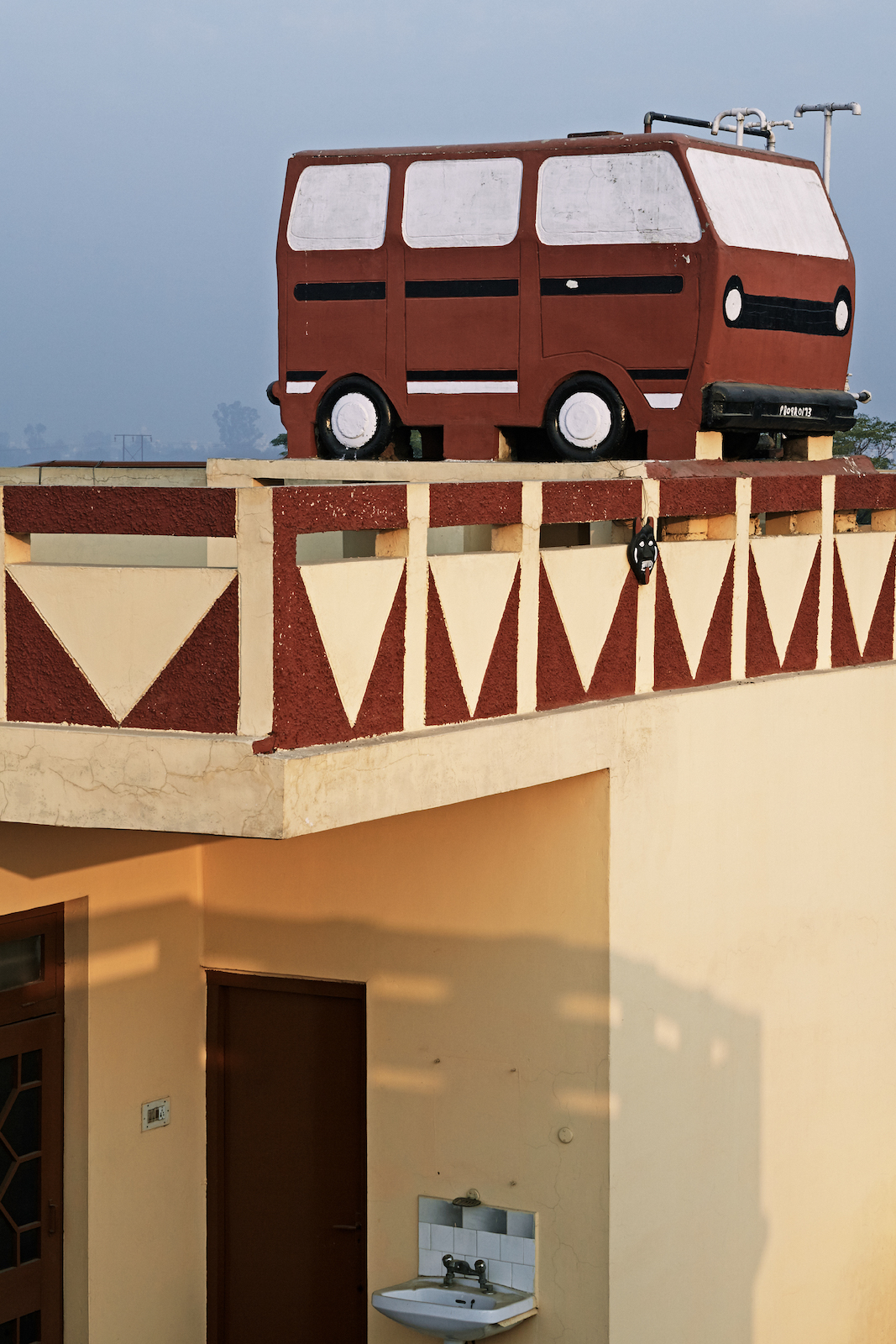
Excerpted from Rajesh Vora: Everyday Monuments—The Rooftop Sculptures of Punjab. Figure 1 Publishing, September 2023. Text copyright © 2023 by Surrey Art Gallery. Photography copyright © 2023 by Rajesh Vora. Read more from our Autumn 2023 issue.

